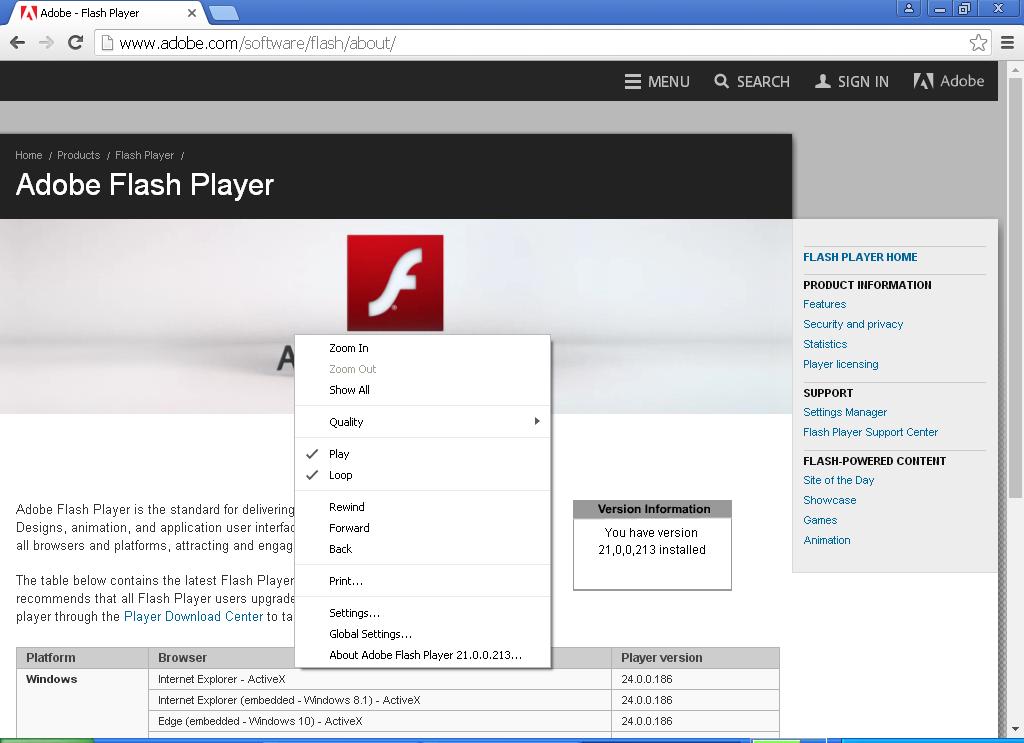
While Microsoft didn't necessarily tie itself to Google's Flash timetable when it adopted Chromium, the company is likely to copy the browser big dog. developer went and decided to bag its version of Edge and instead go full-Chromium, replacing its foundational technology with the same that drives Chrome. Microsoft had a fire-Flash plan two years ago. September's Firefox 69 will eliminate the "Always Activate" shortcut, forcing users to approve Flash every time on every site. On a related note, Mozilla pointed out that barely half - 50.8% - of all copies of Firefox now have Flash installed.

The exception will be Firefox's Extended Support Release (ESR), designed for enterprise settings, which will continue to run the plug-in through 2020. Still to come for Firefox: Mozilla plans to strip all Flash support from the browser in early 2020. It's in Preferences (macOS) and Options (Windows): Extensions & Themes-Plugins->Shockwave Flash->Always Activate.) (Most Firefox users probably didn't know that there was an "Always Activate" setting that let them skip the authorization hassle. From this point forward, the only settings will be "Ask to Activate," the default, and "Never Activate." 3, the browser is losing the "Always Activate" option for Flash, meaning that every request to run it must be user approved. With Firefox 69, scheduled for release Sept. In early September, Mozilla will take the next step in purging the plug-in. And Firefox will remember the site that was authorized if the user checks the box marked "Remember this decision" in the pop-up that appears when giving Flash permission. Firefox soon to limit Flash optionsĪt this point, Firefox continues to run Flash Player on a per-site basis when a user authorizes the action. Starting with Chrome 76, users will have to dive into Settings to run Flash after seeing this message on a site.

If the user manually switches Flash back on through Settings, the infobar will appear, warning that the plug-in won't be supported at all after December 2020. Google is thinking about adding what it called an "infobar" to the top of Chrome with the debut of version 76. Only after re-enabling Flash - Settings->Advanced->Site Settings->Flash->Ask First - will Chrome users be able to run Flash and display Flash content, and then only after their explicit okay. With Flash default disabled - Chrome 76 will appear July 30, or in six weeks - sites requiring the plug-in will show the "missing puzzle piece" symbol and the message "Adobe Flash Player is blocked." Users will not be able to run Flash - at all - without going into Settings. Starting with Chrome 76, which is the next version slated to ship, Google's browser will disable Flash by default, the state the browser will remain in until all support is yanked in late 2020. Two years after those initial promises of cutting out Flash, where are the browsers? How about a status update? Chrome's this close to turning Flash off by default The oft-abused technology, equally praised and scorned even when it was at the top of its game, will land in the digital landfill at the end of 2020, when the company said it "will stop updating and distributing the Flash Player." īrowser makers quickly chimed in to tell their users how they would sunset Flash, setting up sometimes specific, sometimes vague, timetables for curtailing usage, figuring that going cold turkey would catch site owners unprepared, break the web and turn customers into angry peasants waving torches and pitchforks. Two years ago, Adobe announced it would finally kill and bury Flash Player, the plug-in that simultaneously launched a million websites and gave security professionals nightmares.


 0 kommentar(er)
0 kommentar(er)
